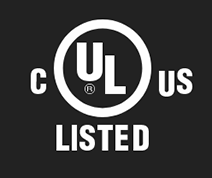What Is Modified Atmosphere Packaging?
Regardless of your refrigeration or packaging system, food is always subject to spoiling. The most common examples of food spoilage include milk curdling and fermenting, fruit browning or rotting, and nasty mold spore growth on bread.
To combat this, the food packaging industry uses a processing system known as modified atmosphere packaging (MAP) to package food. This packaging process aims to inhibit unwanted changes brought about by the spoiling process and extend the shelf life of packaged foods. Consumer demand for healthy food options is ever increasing, as is the need for packaging choices to supply desirable and fresh food alternatives. With this demand comes the need to provide a consistent quality control method that can result in less food spoilage.
By expanding the use of modified atmosphere packaging systems to a variety of food products this can inhibit spoilage and allocate fresh food alternatives into a broader scope of markets. The modified atmosphere packaging process achieves this goal without depending on using food stabilizers or chemical additives.
How Does Modified Atmosphere Packaging Protect Foods?
The food processing system for modified atmosphere packaging is also referred to as gas flushing, protective atmosphere packaging, or reduced oxygen packaging. This process involves exchanging the atmosphere within food packaging with natural gases in precise proportions. This method is proven to inhibit the oxidation process and prevent any microbes from flourishing on the food product.
By flushing or changing the gaseous atmosphere that exists within a packaged good, it permits a much longer shelf-life by preserving the food.
Nitrogen is the perfect solution to displacing the oxygen levels that lead to the spoilage of various foods. The use of nitrogen in gas flushing creates the desired controlled proportions that inhibit the oxidation process and successfully modify the atmosphere in which the food is packaged to significantly extend the shelf life of the food product.
Partner with On Site Gas Systems
When it comes to dependable nitrogen generators, On Site Gas Systems is the leader in customizing a system suited for your operations. On Site Gas supplies manufacturers around the globe with top-notch nitrogen generators made in their own ISO-certified factory. We are reputed for our best-in-class nitrogen generation systems that are both reliable and cost-effective.
From PSA nitrogen generators and membrane nitrogen gas generators to custom nitrogen engineered systems, On Site Gas covers a breadth of manufacturing needs for modified atmosphere packaging for the food industry. Contact our team to learn more about our nitrogen generator systems.



